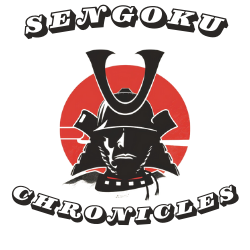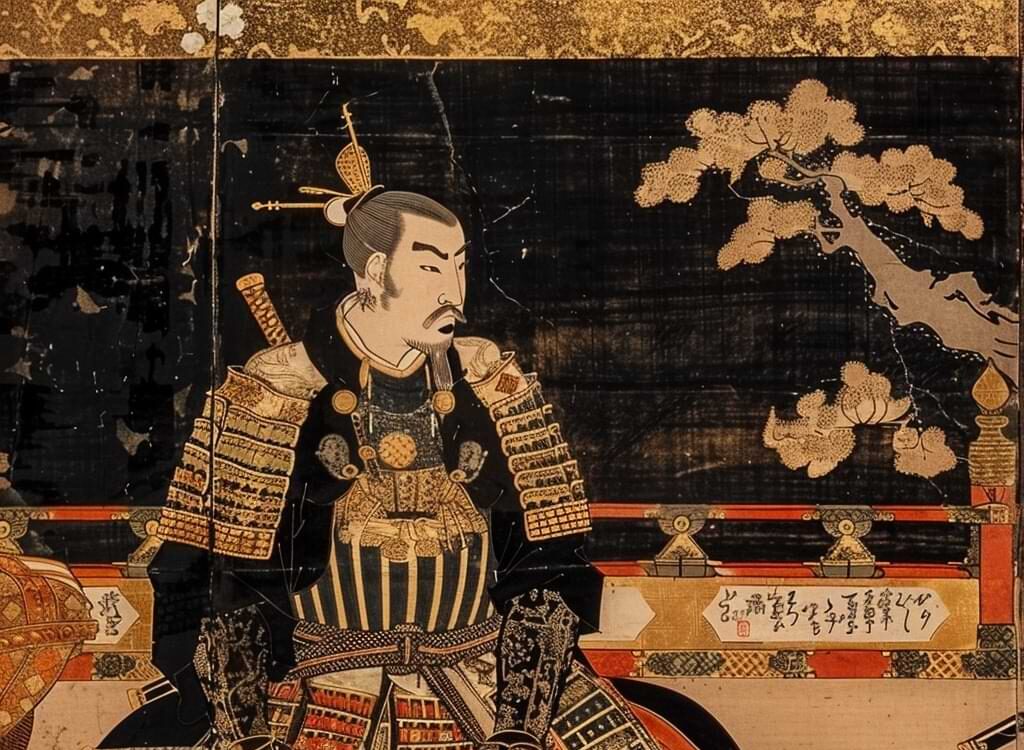Introduction
In the annals of Japanese history, few figures captivate the imagination as vividly as Toyotomi Hideyoshi, the man who rose from the lowliest of origins to become Japan’s second “Great Unifier.” His life story is not merely a tale of power and conquest but a testament to the indomitable human spirit’s capacity to overcome insurmountable odds. Born in a time of incessant warfare and social upheaval, Hideyoshi’s ascent to power is a narrative rich with the themes of ambition, strategy, and transformation.
Hideyoshi’s era, the Sengoku period, was marked by constant military strife and political fragmentation. In this era of chaos, he emerged as a beacon of hope and a pillar of stability, ultimately succeeding in unifying a nation torn asunder by conflict. His journey from a peasant with no surname to the pinnacle of Japanese power is not just a historical account but a source of endless fascination and inspiration. Unlike his contemporaries, Oda Nobunaga and Tokugawa Ieyasu, whose origins already positioned them within the samurai class, Hideyoshi had to carve his path through sheer wit, charm, and a keen sense of political acumen.
This blog post seeks to unravel the intricate tapestry of Toyotomi Hideyoshi’s life, exploring his early days of humble beginnings, his strategic rise to power under the tutelage and service of Oda Nobunaga, and his eventual unification of Japan. Through his story, we will delve into the complexities of his military campaigns, his visionary policies, and the cultural legacy he left behind. Hideyoshi’s life story serves as a powerful reminder of how determination, coupled with a sharp mind, can rewrite the stars and alter the course of history. Join us as we journey through the life of a man who became one of Japan’s most legendary figures, whose legacy continues to echo through the ages.
Early Life and Rise
The saga of Toyotomi Hideyoshi, often shrouded in legend and folklore, begins with the most humble of origins, in a time when Japan was fractured by constant war and social stratification. Born around 1537 in Nakamura, Owari Province, Hideyoshi’s early life offered little hint of the monumental impact he would have on Japanese history. His birthplace was a realm ruled by the powerful Oda clan, setting the stage for Hideyoshi’s eventual rise.
Background: Birth and Early Life in Obscurity
Hideyoshi was born into a peasant family, a status that predetermined a life of toil and obscurity. The era’s rigid social structure meant that his prospects were severely limited from the outset. Yet, even in these early years, tales of his cleverness and ambition began to take shape. It is said that Hideyoshi was not content with his lot in life and dreamt of rising above his station, a testament to the restless spirit that would one day unify Japan.
Initial Steps: Entry into the Service of Oda Nobunaga
Hideyoshi’s journey to prominence began in earnest when he entered the service of Oda Nobunaga, a powerful daimyo with grand ambitions to consolidate power. Initially taking on menial roles, Hideyoshi’s talents did not remain unnoticed for long. His intelligence, charisma, and innate understanding of strategy and human nature quickly elevated him within Nobunaga’s ranks. This period was crucial, as it not only provided Hideyoshi with a stage to demonstrate his capabilities but also ingrained in him the ruthless pragmatism and innovative tactics that would characterize his later campaigns.
Key Qualities: Highlighting His Resourcefulness, Ambition, and Intelligence
Hideyoshi’s rise was meteoric, fueled by a combination of resourcefulness, ambition, and intelligence. His ability to think creatively, often outmaneuvering more traditionally minded samurai, set him apart. One famous anecdote illustrates his ingenuity: tasked with taking an impregnable fortress, Hideyoshi chose to negotiate and ingeniously use a night attack of drums and banners to simulate a larger force, leading to the fortress’s surrender without bloodshed. Such tactics not only won him battles but also the admiration and loyalty of those he led.
As Hideyoshi’s reputation grew, so did his responsibilities and power. His successes on the battlefield and in governance were marked by a blend of military prowess and political acumen. Unlike Nobunaga’s often brute force approach, Hideyoshi favored diplomacy and strategic alliances, laying the groundwork for his vision of a unified Japan. His marriage to Nene, a woman of noble birth, also helped elevate his social standing, further cementing his position within the Oda clan.
Hideyoshi’s early life and rise are emblematic of his unique place in Japanese history. From his obscure beginnings to his pivotal role under Oda Nobunaga, his story is a testament to the power of ambition and the possibilities that arise when talent and opportunity collide. As we delve deeper into his life, it becomes clear that Hideyoshi was not merely a man of his time but a visionary who shaped the course of Japanese history.
Service Under Oda Nobunaga
Toyotomi Hideyoshi’s ascent to power and historical prominence cannot be discussed without delving into his service under Oda Nobunaga, one of Japan’s most influential and feared warlords during the Sengoku period. This phase of Hideyoshi’s life was marked by remarkable achievements and a deepening of the traits that would define his later rule: strategic brilliance, a penchant for diplomacy, and an uncanny ability to turn adversities into opportunities.
Contributions to Nobunaga’s Campaigns
Hideyoshi’s contributions under Nobunaga were pivotal in several key campaigns that expanded Nobunaga’s power. His first significant military achievement came at the Siege of Inabayama Castle in 1567, where Hideyoshi’s ingenuity in constructing a castle on Mount Sunomata overnight—a feat that seemed impossible—played a critical role in Nobunaga’s victory. This event not only demonstrated Hideyoshi’s resourcefulness but also solidified his place as one of Nobunaga’s most trusted generals.
Hideyoshi’s Role in Significant Battles and Strategies
Hideyoshi’s military and strategic acumen shone brightly in the years that followed. His role in the Battle of Nagashino in 1575, where Nobunaga’s forces defeated the powerful Takeda clan, was crucial. Although primarily Nobunaga’s triumph, Hideyoshi contributed significantly to the planning and execution of strategies that led to the decimation of the Takeda cavalry, leveraging matchlock guns to shift the battle’s tide. This battle underscored the evolving nature of warfare in Japan and highlighted Hideyoshi’s ability to adapt and innovate.
The Relationship Between Nobunaga and Hideyoshi
The relationship between Oda Nobunaga and Toyotomi Hideyoshi was complex, characterized by mutual respect, reliance, and the inevitable tensions that arise when two ambitious leaders share a stage. Nobunaga recognized Hideyoshi’s talents early on and gave him opportunities to rise, but not without testing his loyalty and abilities to their limits. Hideyoshi, for his part, remained loyal to Nobunaga, even as his own power and influence grew. Their bond was such that, upon Nobunaga’s death at the Incident at Honnō-ji in 1582, Hideyoshi was among the most fervent in seeking retribution against the traitor Akechi Mitsuhide, solidifying his commitment to Nobunaga’s legacy.
Nobunaga’s reliance on Hideyoshi was evident in his entrusting him with critical missions, including negotiating with rival clans and overseeing the construction of monumental castles. Hideyoshi’s diplomatic endeavors were particularly noteworthy, often preferring negotiation over conflict, a trait that distinguished him from Nobunaga’s more confrontational approach.
The years spent under Nobunaga were formative for Hideyoshi, not just in honing his military and strategic skills but in understanding the complexities of leadership and governance. His experiences during this period laid the groundwork for his eventual rise to power, providing him with a deep understanding of the political landscape of Japan and the challenges of unifying a nation fragmented by war. Through his service under Nobunaga, Hideyoshi emerged as a formidable leader in his own right, setting the stage for his remarkable journey from a humble foot soldier to the ruler of Japan.
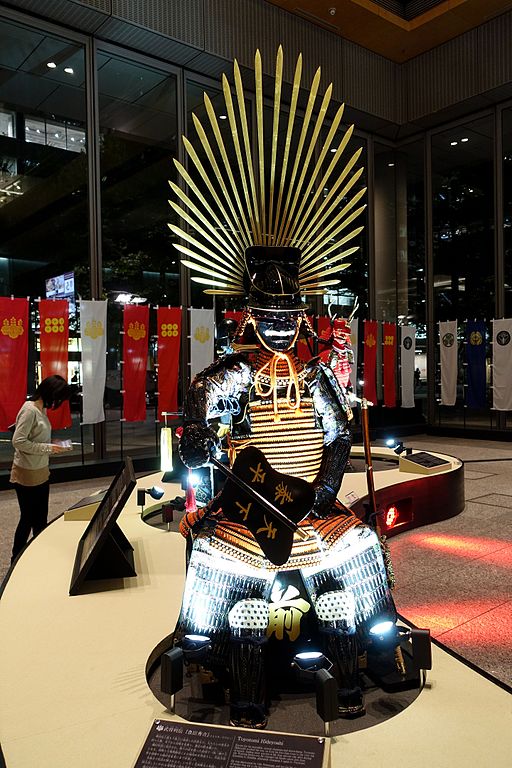
Path to Power
Toyotomi Hideyoshi’s path to power, following the death of Oda Nobunaga, is a testament to his extraordinary strategic mind, political savvy, and unparalleled ambition. This period marked the transition from Hideyoshi’s role as a loyal general to that of a sovereign ruler with a vision to unify Japan under his rule.
The Incident at Honnō-ji: Nobunaga’s Death and the Vacuum of Power
In 1582, a pivotal moment reshaped the course of Japanese history: the Incident at Honnō-ji. Oda Nobunaga, the formidable warlord on the cusp of unifying Japan, was betrayed and forced to commit suicide by one of his own generals, Akechi Mitsuhide. This act created a power vacuum and set the stage for Hideyoshi to rise to prominence. Nobunaga’s sudden demise left his vast territories and the quest for unification in jeopardy, presenting both a crisis and an opportunity for Hideyoshi.
Hideyoshi’s Swift Action to Avenge Nobunaga and Consolidate Power
Reacting with remarkable speed and decisiveness, Hideyoshi negotiated a temporary truce with the Mori clan, against whom he was campaigning, to quickly return and confront Mitsuhide. Demonstrating his mastery of strategy and his capacity for swift action, Hideyoshi forced Mitsuhide into battle at Yamazaki. Within a mere thirteen days after Nobunaga’s death, Hideyoshi avenged his lord and eliminated Mitsuhide, asserting himself as Nobunaga’s rightful successor and showcasing his ability to maneuver through the chaos of Sengoku Japan.
Political Savvy: Negotiations, Alliances, and Elimination of Rivals
Hideyoshi’s path to power was not solely through military might; his political acumen played a critical role in his rise. Understanding the importance of alliances and the complexities of feudal loyalty, he embarked on a series of negotiations to secure the support of former Nobunaga retainers and other powerful daimyos. His ability to blend coercion with conciliation, offering land and titles in exchange for loyalty, helped stabilize the realm and consolidate his power base.
One of Hideyoshi’s most significant political maneuvers was the way he dealt with Shibata Katsuie, another of Nobunaga’s powerful generals, who contested Hideyoshi’s leadership. Through a combination of military strategy and negotiation, Hideyoshi emerged victorious from their confrontation, further cementing his position as Japan’s paramount leader.
As Hideyoshi’s influence grew, so did his efforts to establish control over Japan. He initiated a series of campaigns to subdue the remaining daimyos who opposed his rule, employing both military force and diplomatic measures to bring them into his fold. His strategic marriages, including his own to Nene and arranging marriages for his generals into influential families, were part of his broader strategy to unify Japan under his leadership.
Unification of Japan
Toyotomi Hideyoshi’s quest to unify Japan was marked by a blend of military conquests, diplomatic maneuvers, and strategic governance reforms. After consolidating his power following the death of Oda Nobunaga, Hideyoshi embarked on an ambitious campaign to bring the entire country under a single ruler for the first time in centuries. This period of his rule saw Japan transform from a collection of warring states into a more centralized and pacified nation.
Military Campaigns: Conquest of Shikoku, Kyushu, and the Pacification of the Northern Clans
Hideyoshi’s military campaigns were pivotal in his quest for unification. One of his first major military achievements was the conquest of Shikoku in 1585, where he defeated the Chōsokabe clan, demonstrating his military prowess and strategic acumen. Following this victory, he turned his attention to Kyushu, where the Shimazu clan held power. Through a combination of military force and strategic diplomacy, he successfully subdued the Shimazu in 1587, further extending his influence and control.
The pacification of the northern clans represented one of Hideyoshi’s most significant challenges. The Hojo clan in the Kanto region was particularly resistant. However, through the Siege of Odawara in 1590, Hideyoshi managed to subdue them, showcasing his ability to orchestrate large-scale military operations. This victory was crucial, as it effectively brought the last of the independent samurai clans under his control, marking a significant step towards national unification.
Diplomatic Efforts: Establishing a Centralized Government and Policies for Peace
Hideyoshi’s unification of Japan was not achieved through military might alone; his diplomatic efforts played a crucial role. Recognizing the importance of a stable governance structure, he established a centralized government, appointing loyal generals and allies to key positions to ensure control over the newly unified territories. This system not only facilitated efficient administration but also helped to maintain peace across the regions.
Moreover, Hideyoshi implemented policies aimed at securing a lasting peace. These included the “Sword Hunt” (Katanagari), which disarmed the peasantry and religious institutions, thereby consolidating military power with the samurai class and preventing uprisings. He also issued the “Taiko’s Edict on Land Inspection” to standardize the measurement of land and the assessment of taxes, which helped stabilize the economy and centralize authority.
Social and Economic Reforms: Land Surveys, Caste System, and Sword Hunts
Hideyoshi’s vision for a unified Japan extended beyond military and political domains; he also introduced significant social and economic reforms. The land survey (Taikō Kenchi) was among his most impactful policies, creating a more equitable and systematic method for assessing land and taxation. This not only increased the central government’s revenue but also laid the groundwork for modernizing Japan’s agricultural and economic systems.
He further solidified the class structure by formally establishing a caste system that defined the societal roles of samurai, farmers, artisans, and merchants. This system aimed to stabilize society by clarifying social hierarchies and reducing class conflicts.
The Sword Hunt policy, aimed at disarming peasants and religious institutions, was another critical measure in maintaining social order and centralizing military power. By ensuring that only samurai could bear arms, Hideyoshi minimized the potential for rebellion and solidified the warrior class’s status as the ruling elite.
Hideyoshi’s Korea Campaigns
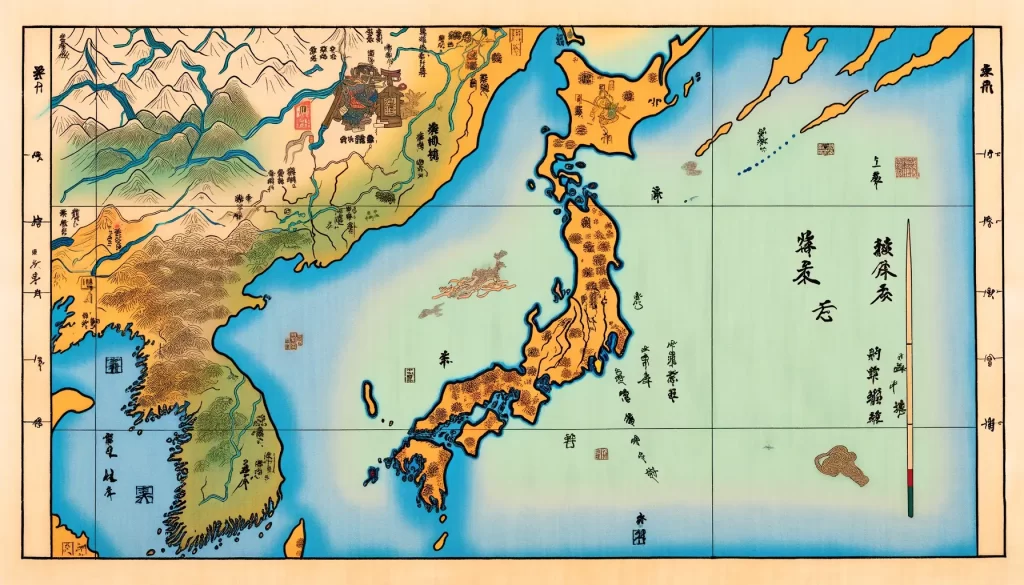
Toyotomi Hideyoshi’s ambitions did not cease with the unification of Japan. In 1592, he launched what would be known as the first of the Imjin Wars, initiating a series of invasions into Korea. This move was driven by a mix of strategic, economic, and possibly personal motives, aiming to extend his influence beyond Japan and possibly facilitate a march into China, then under the Ming Dynasty. Hideyoshi envisioned a grand East Asian empire under Japanese dominion, with himself at the helm. However, these campaigns would unfold dramatically differently from his conquests within Japan, challenging his previously unblemished record of success.
Motivations Behind the Invasions of Korea
Hideyoshi’s motivations for invading Korea were complex and multifaceted. At the forefront was his desire to project Japanese power into the Asian continent, seeking to emulate the expansive conquests of historical figures like Alexander the Great. Economically, Korea was seen as a gateway to the rich trade routes and resources of China. Additionally, Hideyoshi sought to employ the samurai class, whose restlessness and martial prowess had been tempered by the unification of Japan, in a grand endeavor that would secure his legacy and further consolidate his power.
Challenges and Outcomes of the Campaigns
The Korean campaigns were marked by initial successes but ultimately led to protracted warfare that drained Japanese resources and morale. The Japanese forces swiftly captured Seoul and progressed deep into Korean territory. However, they faced stiff resistance, not only from the Korean military, led by Admiral Yi Sun-sin and his formidable “turtle ships,” but also from Chinese forces sent by the Ming Dynasty to assist Korea.
One of the significant challenges was the logistical nightmare of sustaining long supply lines across the sea, exacerbated by Korea’s guerrilla tactics and the naval superiority of the Korean fleet. The conflict became a stalemate, with neither side able to deliver a decisive blow.
The campaigns were also marked by brutalities that would sour Japan-Korea relations for centuries. The widespread destruction, looting, and suffering inflicted upon the Korean populace left deep scars. Despite the massive commitment of resources and manpower, the campaigns failed to secure the comprehensive victory Hideyoshi had envisioned.
Impact on Hideyoshi’s Legacy and Japan-Korea Relations
The Korean invasions had a profound impact on Hideyoshi’s legacy. While he remained a revered figure in Japan for his unification of the country, his failure to conquer Korea and advance into China tarnished his image as an invincible military leader. The campaigns drained Japan’s treasury, cost tens of thousands of Japanese lives, and ultimately yielded little in terms of territorial gain or strategic advantage.
For Korea, the invasions were a period of profound suffering and heroism, highlighting the resilience of the Korean people and the strategic brilliance of leaders like Admiral Yi Sun-sin. The invasions left a legacy of hostility and mistrust between Korea and Japan that would influence their relations for generations.
The Korean campaigns illustrate the limits of military power and ambition. Despite his successes in unifying Japan, Hideyoshi’s overreach into Korea serves as a cautionary tale about the costs of imperial ambitions and the unpredictable nature of warfare.
Cultural and Political Legacy
Toyotomi Hideyoshi, one of Japan’s great unifiers, left an indelible mark on the country’s cultural and political landscape. His impact extends far beyond his military conquests and political maneuvers, influencing the very fabric of Japanese society, governance, and culture. Hideyoshi’s legacy is a complex tapestry of innovation, reform, and cultural patronage, intertwined with the ambition and ruthlessness characteristic of his era.
Construction of Iconic Castles and Contributions to Japanese Culture
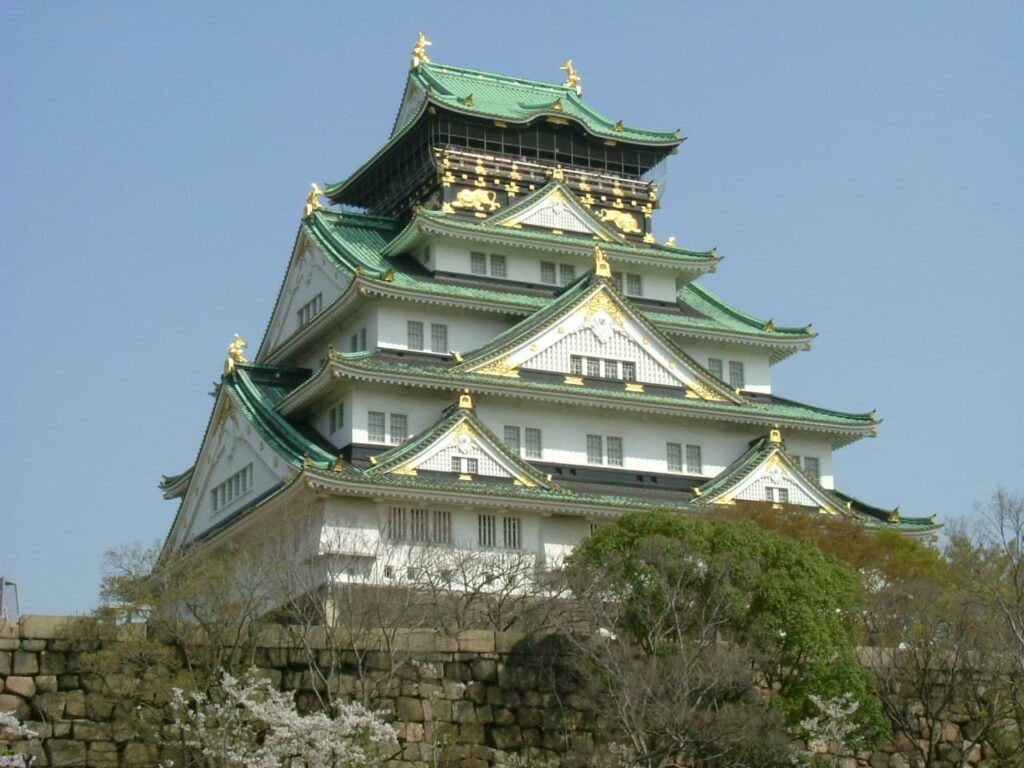
Hideyoshi was a prolific builder, responsible for the construction and enhancement of many of Japan’s most famous castles, which today symbolize the Sengoku period’s architectural and cultural achievements. Osaka Castle, his most ambitious project, stands as a testament to his power and vision. Designed not only as a military fortress but also as a symbol of unification and authority, Osaka Castle showcased the architectural sophistication and aesthetic sensibilities of the period. These castles served not just as military strongholds but as centers of administration and culture, contributing to the urban development and cultural flourishing of the surrounding areas.
Beyond architecture, Hideyoshi had a profound impact on Japanese tea culture. He was an avid patron of the arts and took a keen interest in the tea ceremony, which he used as a tool for political diplomacy and social bonding among the samurai class. Through his patronage, Hideyoshi promoted the development of the tea ceremony into a refined cultural practice, influencing its philosophical and aesthetic evolution.
Establishment of a Legal and Administrative Framework
Hideyoshi’s efforts to centralize and stabilize Japan extended to the establishment of a comprehensive legal and administrative framework. His land surveys and the resulting cadastral maps allowed for more systematic taxation and governance, laying the groundwork for modern Japan’s administrative structure. These reforms standardized land assessment, contributing to a more equitable and efficient system of governance.
Moreover, Hideyoshi implemented laws that aimed to freeze the social hierarchy, distinguishing between the samurai warrior class and the peasantry. By prohibiting the peasantry from bearing arms and establishing strict social classes, he sought to ensure social stability and prevent the upheaval that characterized the Sengoku period. These policies had long-lasting effects on Japanese society, reinforcing the distinctions between classes and shaping social dynamics for centuries.
Hideyoshi’s Role in Paving the Way for the Tokugawa Shogunate
While Hideyoshi’s immediate successors failed to maintain control over the unified Japan he had achieved, his efforts significantly paved the way for the Tokugawa Shogunate. The administrative, legal, and social frameworks he established formed the basis upon which Tokugawa Ieyasu would build a lasting shogunate. Hideyoshi’s unification of Japan, his attempts at foreign conquest, and his governance reforms created the preconditions for the Tokugawa period’s relative peace and stability.
His policies and the structures he put in place helped to transition Japan from the chaos of the Sengoku period to the ordered society of the Edo period. By centralizing authority and laying down a system of governance that would be refined and continued by the Tokugawa, Hideyoshi’s legacy is intrinsically linked to the emergence of early modern Japan.
Through his cultural patronage, architectural contributions, and foundational governance reforms, Toyotomi Hideyoshi left a legacy that significantly influenced Japan’s cultural and political trajectory. His life and rule embody the complexities of power, the potential for transformation, and the enduring impact of visionary leadership on a nation’s course.
Succession and the Toyotomi Clan’s Decline
The succession issue and the subsequent decline of the Toyotomi clan mark a critical juncture in Japanese history, illustrating the challenges of maintaining power and unity in the complex political landscape of the time. Toyotomi Hideyoshi, at the height of his power, faced the dilemma of ensuring a stable transition after his death. His efforts to secure the future of his lineage and the fragile peace he had forged across Japan would ultimately unravel, leading to the rise of the Tokugawa Shogunate and the end of the Sengoku period.
Hideyoshi’s Attempts to Secure Succession for His Son, Hideyori
In his later years, Hideyoshi was acutely aware of the precarious nature of his legacy. His concern was compounded by the fact that his heir, Toyotomi Hideyori, was but a child at the time of Hideyoshi’s death in 1598. Recognizing the vulnerability of his young son and the potential for power struggles among Japan’s ambitious daimyo, Hideyoshi established a council of five regents to govern on behalf of Hideyori until he came of age. This council included some of Japan’s most powerful lords, such as Tokugawa Ieyasu and Maeda Toshiie, and was intended to ensure stability and continuity.
The Political Intrigue and Conflict Leading to the Battle of Sekigahara
Despite Hideyoshi’s intentions, the regency system soon became a source of tension and conflict. Tokugawa Ieyasu, the most powerful among the regents, sought to consolidate his own power and undermine the Toyotomi clan’s authority. The political intrigue and maneuvering culminated in the Battle of Sekigahara in 1600, one of the most significant and decisive battles in Japanese history. This conflict pitted pro-Toyotomi forces against the Eastern Army led by Tokugawa Ieyasu.
The battle resulted in a decisive victory for Tokugawa Ieyasu, significantly weakening the Toyotomi clan and altering the course of Japanese history. The victory at Sekigahara allowed Ieyasu to establish the Tokugawa shogunate, which would govern Japan for over 250 years, ushering in a period of peace and stability known as the Edo period.
The Fall of the Toyotomi Clan and the Rise of Tokugawa Ieyasu
The aftermath of Sekigahara saw the gradual erosion of the Toyotomi clan’s power and influence. Despite the initial survival of the Toyotomi family and their retainers in Osaka Castle, tensions continued to simmer between the Toyotomi and Tokugawa clans. These tensions eventually led to the Siege of Osaka in 1614-1615, a desperate and ultimately futile attempt by the Toyotomi loyalists to reclaim power.
The siege ended in defeat for the Toyotomi forces, and with the death of Toyotomi Hideyori, the Toyotomi lineage effectively came to an end. This marked the final consolidation of Tokugawa Ieyasu’s power and the beginning of a new era in Japanese history. The strategic elimination of the Toyotomi clan ensured that no credible threat remained to challenge the Tokugawa hegemony, setting the stage for a prolonged period of peace and centralized governance.
The succession and decline of the Toyotomi clan underscore the challenges of dynastic politics and the fragility of power in feudal Japan. Despite Toyotomi Hideyoshi’s remarkable achievements in unifying Japan and establishing a framework for governance, the inability to secure a stable succession led to the eventual downfall of his clan. The transition from the Toyotomi to the Tokugawa rule illustrates the complex interplay of ambition, loyalty, and strategy that defined the Sengoku period’s tumultuous political landscape.
Conclusion
The saga of Toyotomi Hideyoshi, from his humble origins to his zenith as Japan’s second “Great Unifier,” is a narrative that resonates deeply within the tapestry of Japanese history. His life embodies the tumultuous Sengoku period’s spirit—a time of relentless strife, political intrigue, and the relentless pursuit of power. Yet, Hideyoshi’s story stands out for its extraordinary demonstration of human potential, showcasing how sheer determination, strategic brilliance, and a visionary approach to leadership can alter the course of history.
Hideyoshi’s contributions to Japan are manifold, stretching beyond the battlefields to touch upon the very core of Japanese society, governance, and culture. His efforts to unify Japan laid the groundwork for a centralized state, bringing an end to centuries of feudal conflict and setting the stage for the country’s future development. Through his policies and reforms, Hideyoshi not only consolidated power but also fostered a sense of national identity and purpose.
However, Hideyoshi’s legacy is not without its complexities. His ambitious Korean campaigns highlight the limits of military expansion and the human cost of imperial ambitions. Moreover, the eventual decline of the Toyotomi clan following his death underscores the fragility of power and the challenges of succession in a period defined by personal loyalty and martial prowess.
Despite these challenges, Hideyoshi’s impact on Japan endures. His architectural achievements, patronage of the arts, and social reforms have left a lasting imprint on Japanese culture. The castles he built or enhanced, the tea ceremony traditions he fostered, and the administrative systems he established are testaments to his multifaceted legacy.
In reflecting on Toyotomi Hideyoshi’s life and times, one is reminded of the profound ways in which individual leadership can shape the destiny of a nation. His rise from obscurity to supreme power exemplifies the potential for transformation underpinned by vision, adaptability, and resilience. As such, Hideyoshi’s story continues to inspire and captivate, serving as a powerful illustration of the complexities and possibilities inherent in human ambition and the quest for unity and peace.
Additional Resources
For those interested in delving deeper into the life, achievements, and legacy of Toyotomi Hideyoshi, a wealth of resources is available. Below is a curated list of books, documentaries, and websites that offer insightful perspectives on this pivotal figure in Japanese history. Each resource provides a unique lens through which to explore the complexities of Hideyoshi’s character, his contributions to Japan, and his lasting impact.
Books
- “Hideyoshi” by Mary Elizabeth Berry – This comprehensive biography offers an in-depth analysis of Hideyoshi’s life, from his humble beginnings to his rise as Japan’s unifier. Berry’s work is renowned for its detailed research and provides a nuanced portrait of Hideyoshi’s political strategies and personal ambitions.
- “The Samurai: A Military History” by Stephen Turnbull – While not exclusively about Hideyoshi, Turnbull’s book provides essential context on the samurai class and warfare during the Sengoku period. It offers insights into the military strategies and tactics employed by Hideyoshi in his campaigns.
- “Taiko: An Epic Novel of War and Glory in Feudal Japan” by Eiji Yoshikawa – Though a work of historical fiction, “Taiko” is based on extensive historical research and vividly brings to life the era of Hideyoshi. It offers a dramatized, yet insightful, look at his rise to power and the challenges he faced.
Documentaries
- “Japan: Memoirs of a Secret Empire” – This PBS documentary series provides a broader look at the period of the samurai, including the role of Toyotomi Hideyoshi in unifying Japan. It combines historical analysis with dramatic reenactments, offering a visually engaging overview of the era.
- “The Unifiers: The Age of Oda Nobunaga and Toyotomi Hideyoshi” – This documentary focuses on the period of unification under Nobunaga and Hideyoshi, examining their contributions to the creation of a unified Japan. It delves into Hideyoshi’s strategies and his legacy.
Websites
- Samurai Archives – https://www.samurai-archives.com – A comprehensive resource for those interested in Japanese history, the Samurai Archives feature articles, podcasts, and forums dedicated to the Sengoku period and figures like Toyotomi Hideyoshi.
- Metropolitan Museum of Art’s Heilbrunn Timeline of Art History – https://www.metmuseum.org/toah – For those interested in the cultural aspects of Hideyoshi’s era, the Met’s Timeline offers articles and high-quality images of art and architecture from the period, providing context on the cultural environment that Hideyoshi influenced.
Academic Journals
- Japanese Journal of Religious Studies – Scholars and those with an academic interest in Hideyoshi’s impact on Japanese religion and society might explore articles in this journal. It occasionally features research on the unification period and its effects on religious institutions and practices in Japan.
These resources offer a starting point for anyone interested in exploring the life and legacy of Toyotomi Hideyoshi in greater detail. They provide a blend of historical fact, cultural context, and narrative storytelling that can enrich one’s understanding of this complex and influential figure in Japanese history.
